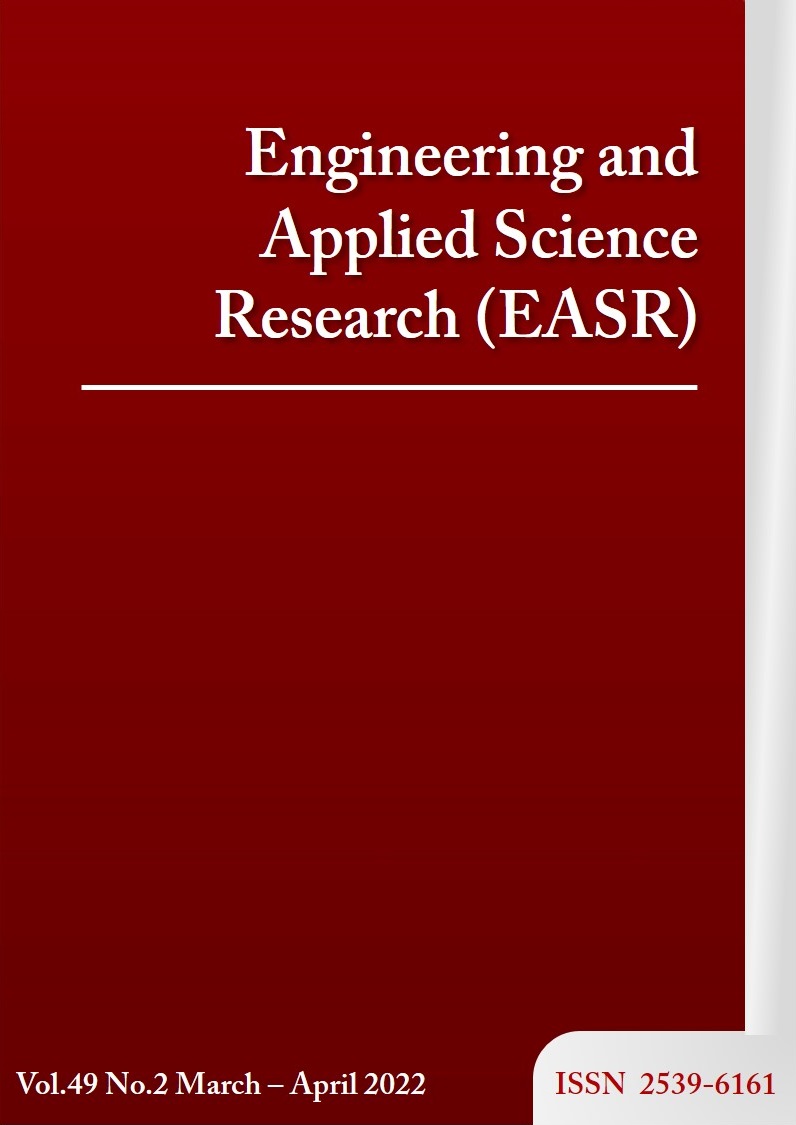Extended technology acceptance model for Indonesian mobile wallet: Structural equation modeling approach
Main Article Content
Abstract
Industrial developments that occurred today are fast; we are living in an era of sophisticated technology. Indonesia ranked second (24.3%) among countries where the adoption of mobile payment apps is growing most fast. One of the most developed services is the mobile wallet. Observing this phenomenon, researchers decided to examine what factors influence mobile wallet adoption and whether the offers made by mobile wallet platforms affect the adoption of technology. This research employs an extended Technology Acceptance Model (TAM) to understand what influences the intention to adopt the mobile wallet. We investigated those variables-perceived usefulness, perceived ease of use, perceived risk, social influence, mobility and price sensitivity. Online questionnaires were distributed, and a sample of 221 respondents was collected for analysis through the structural equation model (SEM) approach with AMOS software. The findings from the study revealed that perceived ease of use, social influence, and mobility significantly impact society's behavioral intention to adopt mobile wallets. In contrast, perceived usefulness and perceived risk do not significantly impact society to adopt a mobile wallet. Perceived ease of use, social influence, and mobility have a positive relationship with adopting a mobile wallet. However, the price sensitivity variable was eliminated.
Article Details
This work is licensed under a Creative Commons Attribution-NonCommercial-NoDerivatives 4.0 International License.
References
Peruzzini M, Grandi F, Pellicciari M. Benchmarking of tools for user experience analysis in industry 4.0. Procedia Manuf. 2017;11:806-13.
Hill J. Fin tech and the remaking of financial institutions. New York: Elsevier; 2018.
Nurhayati-Wolff H. Internet usage in Indonesia-Statistics & facts [Internet]. 2020 [cited 2021]. Available from: https://www.statista.com/topics/2431/internet-usage-in-indonesia/.
Singapore F. Fintech Indonesia report 2018-The state of play for fintech Indonesia [Internet]. 2018 [cited 2020]. Available from: http://fintechnews.sg/20712/indonesia/fintech-indonesia-report-2018/.
Triyanto H. IDC financial insights unveils top fintech startups that will mature fast in Indonesia [Internet]. 2018 [cited 2020]. Available from: https://www.idc.com/getdoc.jsp?containerId=prAP43703318.
McNair C. Global proximity mobile payment users [Internet]. 2018 [cited 2020]. Available from: https://www.emarketer.com/content/global-proximity-mobile-payment-users.
Laucereno SF. OVO & GoPay, 2 fintech kesayangan orang Indonesia [Internet]. 2019 [cited 2020]. Available from: https://m.detik.com/finance/moneter/d-4423535/ovo--gopay-2-fintech-kesayangan-orang-indonesia.
Insider DE. Indonesia's Go-Pay transactions reached US$ 6.3B in 2018 [Internet]. 2019 [cited 2020] Available from: https://www.google.com/amp/s/theinsiderstories.com/indonesias-go-pay-transactions-reached-us6-3b-in-2018/amp/.
Idris M. Hasil survei: Go-Pay jadi uang elektronik paling banyak digunakan di RI [Internet]. 2019 [cited 2020]. Available from: https://m.detik.com/finance/moneter/d-4398523/hasil-survei-go-pay-jadi-uang-elektronik-paling-banyak-dipakai-di-ri.
Venkatesh V, Morris MG, Davis G, Davis FD. User acceptance of information technology: toward a unified view. MIS Q. 2003;27(3):425-78.
Kuo RZ, Lee GG. KMS Adoption: the effects of information quality. Manag Decis. 2009;47(10):1633-51.
Shin DH. Towards an understanding of the consumer acceptance of mobile wallet. Comput Hum Behav. 2009;25(6):1343-54.
Kim C, Mirusmonov M, Lee I. An empirical examination of factors influencing the intention to use mobile payment. Comput Hum Behav. 2009;26(3):310-22.
Liebana-Cabanillas F, Marinkovic V, Kalinic Z. A SEM-neural network approach for predicting antecedents OFM-commerce acceptance. Int J Inform Manag. 2016;37(2):14-24.
Schierz PG, Schilke O, Wirtz BW. Understanding consumer acceptance of mobile payment services: an empirical analysis. Electron Commerce Res Appl. 2010;9(3):209-16.
Thakur R, Srivastava M. Adoption readiness, personal innovativeness, perceived risk and usage intention across customer groups for mobile payment services in India. Internet Res. 2014;24(3):369-92.
Yuan S, Liu Y, Yao R, Liu J. An investigation of user continuance intention towards mobile banking in China. Inform Dev. 2014;32(1):1-15.
Natarajan T, Balasubramanian S, Kasilingam D. Understanding the intention to use mobile shopping applications and its influence on price sensitivity. J Retailing Consum Serv. 2017;37:8-22.
Abrahao RD, Moriguchi SN, Andrade DF. Intention of adoption of mobile payment: an analysis in the light of the unified theory of acceptance and use of technology (UTAUT). RAI Revista de Administraçao e Inovaçao. 2016;13(3):221-30.
Nysveen H, Pedersen PE, Thorbjornsen H, Berthon P. Mobilizing the brand: the effects of mobile services on brand relationships and main channel use. J Serv Res. 2005;7(3):257-76.
Zhou T. Examining location-based services usage from the perspectives of unified theory of acceptance and use of technology and privacy risk. J Electron Commerce Res. 2012;13(2):135-44.
Mallat N, Rossi M, Tuunaien VK, Oorni A. The impact of use context on mobile services acceptance. Inform Manag. 2009;46:190-5.
Park E, Kim KJ. User acceptance of long-term evolution (LTE) services: an application of extended technology acceptance model. Program Electron Libr Inform Syst. 2013;47(2):188-205.
Goldsmith RE, Kim D, Flynn LR, Kim WM. Price sensitivity and innovativeness for fashion among Korean consumers. J Soc Psychol. 2005;145(5):501-8.
Sreejesh S, Mohapatra S, Anusree MR. Business research methods: an applied orientation. Switzerland: Springer; 2014.
Munoz-Leiva F, Climent-Climent S, Liebana-Cabanillas F. Determinants of intention to use the mobile banking apps: an extension of the classic TAM model. Spanish J Market-ESIC. 2017;21(1):25-38.
Shaw N. The mediating influence of trust in the adoption of the mobile wallet. J Retailing Consum Serv. 2014;21(4):449-59.
Anderson JC, Gerbing D. Structural equation modeling in practice: a review and recommended two-step approach. Psychol Bull. 1988;103:411-23.
Sugianto D. Disorot Sri Mulyani, Go-Pay & OVO bisa dipakai bayar dari A Sampai Z [Internet]. 2019 [cited 2020]. Available from: https://m.detik.com/finance/moneter/d-4425155/disorot-sri-mulyani-gopay-ovo-bisa-dipakai-bayar-dari-a-sampai-z.
Oliveira T, Thomas M, Baptista G, Campos F. Mobile payment: understanding the determinants of customer adoption and intention to recommend the technology. Comput Hum Behav. 2016;61:404-14.
Eka R. Fintech report 2018 [Internet]. 2018 [cited 2020]. Available from: https://dailysocial.id/report/post/fintech-report-2018.
Daud, A. Beda LinkAja dengan OVO dan Go-Pay [Internet]. 2019 [cited 2020]. Available from: https://katadata.co.id/berita/2019/07/05/beda-linkaja-dengan-ovo-dan-go-pay.
Qurniawati RS, Nurohman, YA. eWOM pada generasi Z di sosial media. J Manajemen Dayasaing. 2018;20(2):70-80.
Pertiwi WK. Saingi Go-Pay, OVO bakal bisa dipakai transaksi di warung [Internet]. 2018 [cited 2020]. Available from: https://kompas.com/tekno/read/2018/07/02/08040087/saingi-go-pay-ovo-bakal-bisa-dipakai-transaksi-di-warung.



